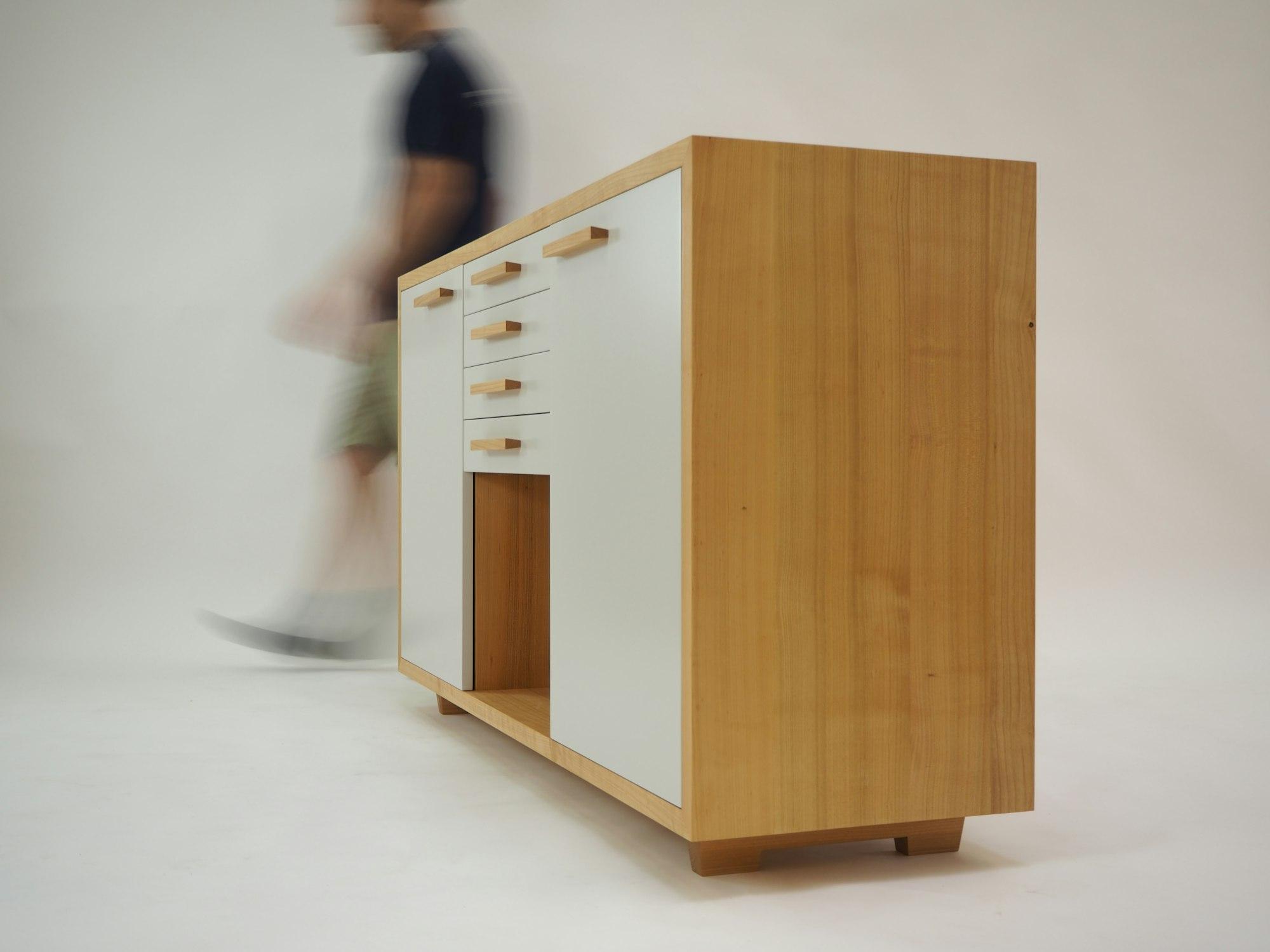How to Spot High-Quality Furniture (And Avoid Cheap Imitations)
Learn to spot high-quality furniture with tips on materials, joinery, and finishes. Discover testing methods, red flags, and how tools like Spoken can help you compare prices and reviews for durable, stylish, and long-lasting pieces. Smart shopping starts here!

Photo by Tiana Borcherding / Unsplash
Ever bought furniture that looked perfect in the showroom but fell apart within a year? Learning to spot quality furniture is an essential skill that can save you from costly mistakes and help you furnish your home with pieces that last. This guide will help you identify high-quality materials, understand craftsmanship, and recognize red flags so you can make smarter buying decisions.
Why High-Quality Furniture Matters
Investing in well-made furniture offers several long-term benefits:
- Cost Savings: While high-quality pieces may cost more upfront, their durability means fewer replacements, saving you money over time.
- Comfort and Aesthetics: Premium furniture is designed with ergonomics and style in mind, enhancing your home’s functionality and appearance.
- Sustainability: Choosing durable furniture reduces waste, as fewer pieces end up in landfills, and many high-quality options are crafted using eco-friendly materials and practices.
Understanding Furniture Materials
The foundation of quality furniture starts with its materials. Here's what to look for:
1. Wood
- Solid Wood: Durable and timeless, hardwoods like oak, maple, and walnut are signs of quality. Softwoods like pine can be suitable for certain uses but are less durable.
- Engineered Wood: Medium-density fiberboard (MDF) and particleboard are affordable but less durable. These are best avoided for pieces that endure heavy use.
- Kiln-Dried Wood: This process removes moisture, reducing the risk of warping or cracking over time.
2. Metal
- Look for materials like stainless steel, wrought iron, or brass. These metals are durable and resistant to corrosion.
- Avoid lightweight metals that are prone to bending, such as aluminum or hollow steel.
3. Upholstery
- Fabric: Natural fibers like cotton, linen, or leather are durable and age well. Synthetic options like polyester or microfiber can also be good for stain resistance.
- Foam Density: High-density foam cushions retain their shape longer than lower-density options, providing better long-term comfort.
4. Glass and Acrylic
- Tempered Glass: Durable and resistant to breakage, tempered glass is ideal for coffee tables and shelving.
- Acrylic vs. Glass: Acrylic is lightweight and shatter-resistant but can scratch more easily.
The Role of Craftsmanship
Well-made furniture stands out through its construction and attention to detail. Here are some features to check:
1. Joinery
- High-quality furniture uses joinery techniques like dovetail, mortise-and-tenon, or dowels, which ensure sturdiness and longevity.
- Red Flags: Pieces held together with staples, visible screws, or glue-only construction are less durable.
2. Finishing
- A smooth, even finish on wood or metal surfaces indicates good craftsmanship. Avoid pieces with bubbling, cracking, or uneven stains, as these suggest shortcuts in production.
3. Hardware
- Look for durable materials like brass, stainless steel, or other metals. Plastic knobs or hinges are often signs of cheap construction.
Testing Furniture for Quality
In-Store Testing
- Sturdiness: Gently shake tables and chairs to ensure they don’t wobble. Sit or lean on furniture to test its stability and comfort.
- Hidden Areas: Check underneath tables and inside drawers for signs of rough construction or unfinished surfaces.
Online Shopping Tips
- Read Reviews: Prioritize customer feedback that mentions durability, comfort, and long-term use.
- Inspect Photos: Zoom in to examine joinery, finishes, and upholstery details.
- Return Policies: Ensure the retailer offers a return or satisfaction guarantee in case the piece doesn’t meet expectations.
Recognizing Red Flags
Be wary of these common indicators of poor-quality furniture:
- Cheap Materials: Thin veneers, laminate finishes, and lightweight metals are less durable.
- Flimsy Construction: Pieces that creak, wobble, or feel too light are unlikely to last.
- Visible Flaws: Uneven finishes, misaligned components, or rough edges indicate poor craftsmanship.
- Unrealistic Prices: Extremely low prices often come at the cost of material or construction quality.
Shopping Strategies for Quality Furniture
1. Where to Buy
- Look for trusted retailers, estate sales, or vintage shops known for selling durable pieces.
- Consider secondhand furniture, which often offers better craftsmanship than mass-produced modern options.
2. Investing in Key Pieces
- Focus your budget on heavily used items like sofas, dining tables, and beds. These pieces should be both durable and comfortable.
- For accent furniture like side tables or decorative shelves, you can prioritize design over durability.
3. Timing Your Purchase
- Shop during sales events like Black Friday, Memorial Day, or end-of-season clearances to find quality furniture at discounted prices.
4. Leverage Price Comparison Tools
- Tools like Spoken allow you to compare prices across multiple retailers, ensuring you get the best deal. They also aggregate customer reviews, giving you valuable insights into the durability and comfort of furniture before buying.
The Value of Price Comparison Tools
Finding high-quality furniture doesn’t have to be overwhelming. Platforms like Spoken simplify the process by:
- Comparing Prices: Ensuring you don’t overpay for premium furniture.
- Highlighting Reviews: Offering insights from real customers about how a piece performs over time.
- Tracking Deals: Allowing you to monitor price drops and seasonal discounts.
Using tools like these, you can confidently shop for furniture that fits your budget and meets your quality expectations.
Conclusion
Investing in high-quality furniture is an investment in your home’s comfort, durability, and style. By understanding materials, craftsmanship, and testing methods, you can confidently choose pieces that last. Don’t let cheap imitations fool you—use tools like Spoken to compare prices, read reviews, and make informed decisions. With the right approach, you’ll furnish your home with items that bring value for years to come.
Quick facts
How can you tell if furniture is good quality?
Good quality furniture uses durable materials like solid wood or high-density foam, has smooth finishes, and sturdy joinery like dovetail or mortise-and-tenon. Test for stability by shaking it and check for hidden flaws in corners or undersides.
How to shop for high-quality furniture?
Look for trusted materials, solid construction, and durable finishes. Test for sturdiness in-store or read online reviews about durability. Use price comparison tools like Spoken to find fair prices and verify return policies for risk-free purchases.
What is the top rated furniture brand?
Top-rated brands vary by preference but include Stickley for craftsmanship, West Elm for modern design, and IKEA for affordability. Research customer reviews and durability ratings to find the best fit for your needs.
Is Costco furniture better than Ashley furniture?
Costco furniture is known for value and durability, while Ashley Furniture offers more variety and style options. Costco may excel in quality for price-conscious buyers, but Ashley provides greater design flexibility.
How expensive should furniture be?
Furniture costs depend on the piece and materials. Quality sofas range from $1,000-$3,000, while solid wood dining tables start around $800. Investing in key items ensures durability and comfort, while accent pieces can be more budget-friendly.
What is high-end furniture made of?
High-end furniture typically uses materials like hardwood (e.g., oak, walnut), genuine leather, stainless steel, and natural fabrics. Premium craftsmanship includes dovetail joinery, kiln-dried wood, and hand-stitched upholstery.
Is Ethan Allen a luxury brand?
Yes, Ethan Allen is considered a luxury brand known for its traditional and timeless designs, high-quality materials, and craftsmanship. It offers customizable options and caters to premium home decor buyers.
What is the most expensive furniture brand?
Famous luxury brands like Boca do Lobo, Fendi Casa, and Roche Bobois are among the most expensive, offering bespoke designs, rare materials, and exceptional craftsmanship.
Is it worth buying high-end furniture?
Yes, high-end furniture is worth it for its durability, timeless design, and comfort. It often saves money long-term as it lasts longer and retains value better than cheaper alternatives.
What type of furniture is long-lasting?
Solid wood furniture, leather-upholstered sofas, and pieces with stainless steel or brass hardware are long-lasting. High-density foam cushions and kiln-dried wood frames also enhance durability.
What is the most luxurious material for a couch?
Genuine leather is considered the most luxurious material for a couch due to its durability, softness, and timeless appeal. Velvet is another high-end choice, offering elegance and rich texture.
What is considered designer furniture?
Designer furniture is crafted by well-known brands or artisans, often featuring unique designs, premium materials, and meticulous craftsmanship. Examples include Eames chairs or Roche Bobois sofas.
What are the best materials for high-quality furniture?
The best materials include solid hardwoods like oak and walnut, stainless steel or wrought iron for frames, and natural upholstery fabrics like cotton or leather. High-density foam is ideal for cushions, and tempered glass works well for tables or shelving.
What is kiln-dried wood, and why is it important?
Kiln-dried wood has been treated to remove moisture, making it resistant to warping, cracking, and shrinking. This stability ensures furniture made with kiln-dried wood lasts longer and performs better in various environments.
How can you test furniture for quality in-store?
Test sturdiness by shaking tables or chairs to check for wobbling. Sit on upholstered items to gauge comfort and support. Inspect hidden areas like undersides or drawer interiors for rough finishes or weak joints.
What joinery techniques indicate high-quality furniture?
High-quality furniture features joinery like dovetail, mortise-and-tenon, or dowels. These techniques provide superior durability compared to staples, visible screws, or glue-only construction, which are signs of poor quality.
Why is tempered glass a good choice for furniture?
Tempered glass is durable, shatter-resistant, and ideal for coffee tables or shelves. It provides a sleek look while being more resistant to breakage than standard glass, making it a safer and more reliable option.
What foam density is best for cushions?
High-density foam is the best choice for cushions as it retains its shape longer and provides better support. Low-density foam tends to flatten quickly and is less durable for everyday use.
What are the red flags of poorly made furniture?
Red flags include lightweight materials like particleboard, visible staples or glue-only joinery, uneven finishes, and plastic hardware. Wobbly structures and bubbling or cracking in finishes are also signs of low-quality furniture.

Geoff Abraham
Co-founder & President of Spoken
Geoff is the co-founder and President of Spoken. He is a Dad. He holds a BA from UT Austin (Plan II) and an MBA from Stanford. Geoff has built several successful businesses, including a bicycle taxi business in San Francisco which he ran for 10 years with his wife, Mimosa. He is an executive coach, and he actively invests in seed-stage startups via The Explorer Fund.
Read more

